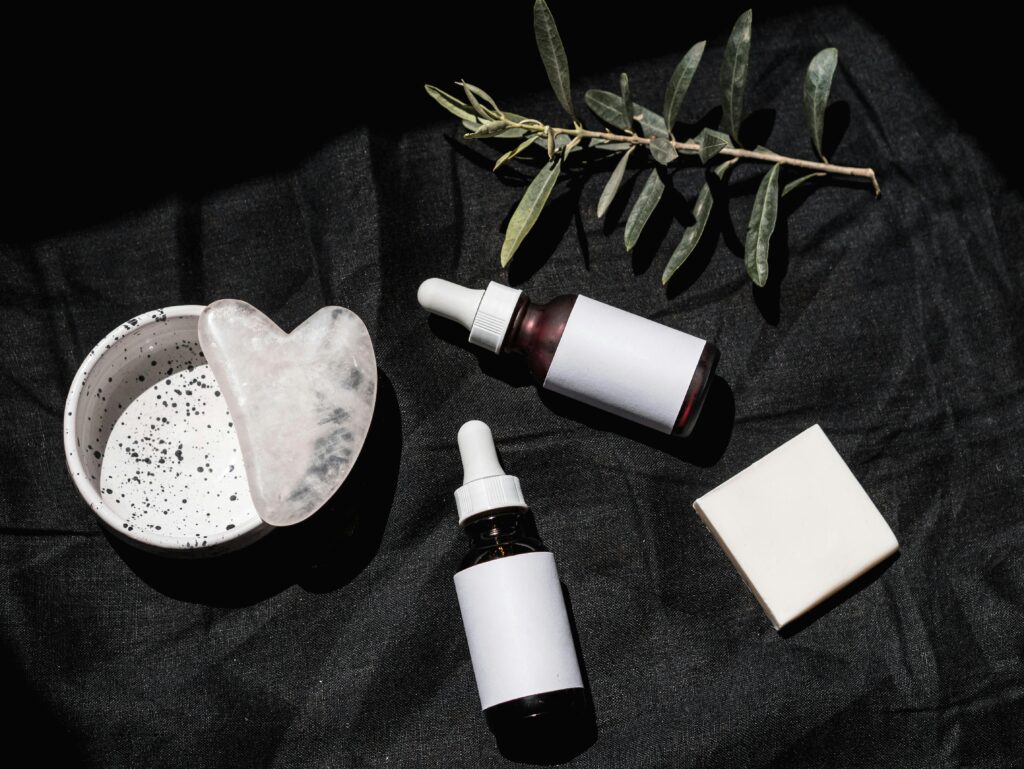
Regarding skincare, you’ve often heard about probiotics and their benefits for the skin. But have you ever heard of postbiotics? They are a powerful blend of beneficial compounds such as peptides, enzymes, organic acids, and vitamins that synergize to transform your skin naturally. This article is an ultimate guide to understand: What are postbiotics and how do they benefit the skin. We’ll also discuss the DIY recipes for postbiotic skincare products, how to incorporate postbiotics into your skincare routine, and how to choose suitable products for different skin types.
What are Postbiotics and How Do They Benefit The Skin?
Postbiotics are the byproducts of the fermentation process that occurs during the interactions of probiotics with prebiotics. Probiotics are the microorganisms, especially live bacteria and yeasts, that are good for you. At the same time, prebiotics are the compounds in food that foster the growth or activity of beneficial microorganisms such as bacteria and fungi. Postbiotics offer a wide range of benefits for your skin. Firstly, they help to balance the skin’s microbiome. It is the collection of microorganisms that reside on the skin’s surface. When the microbiome is balanced, it protects the skin against harmful bacteria and environmental aggressors.


The Science Behind Postbiotic Skincare
Postbiotics tend to transform your skin naturally and effectively through different methods. These methods include:
Interacting with Skin Microbiome – Postbiotics usually work by interacting with the skin’s microbiome, a complex ecosystem of microorganisms. When the microbiome is balanced, it can help maintain the skin’s health and appearance. However, factors such as stress, pollution, and harsh skincare products can disrupt this balance, leading to various skin issues. Postbiotics help restore harmony to the microbiome by promoting the growth of beneficial bacteria and inhibiting the growth of harmful bacteria.
Anti-Inflammatory Action – One of the key methods postbiotics transform the skin is through their anti-inflammatory properties. Inflammation is a common cause of different skin issues, such as acne, rosacea, and eczema. Postbiotics help reduce inflammation by inhibiting the production of pro-inflammatory molecules and promoting the production of anti-inflammatory molecules. It can result in calmer, less irritated skin.
Promote Collagen and Elastin Productions – Another way postbiotics work is by promoting collagen and elastin production. These proteins are essential for maintaining the skin’s elasticity and firmness. As we age, the production of collagen and elastin naturally declines. This reduction leads to sagging and wrinkling. Postbiotics can help stimulate the production of these proteins, resulting in a more youthful and plump complexion.
The Benefits of Postbiotic Skincare: Achieving Healthy and Glowing Skin with Postbiotics
Postbiotic skincare offers a wide range of benefits for your skin. Some of the key benefits include:
Restoring Skin’s Natural Balance – Postbiotic skincare helps to restore and maintain the skin’s natural balance. It promotes the growth of beneficial bacteria and inhibits the growth of harmful bacteria.
Antioxidant Properties – Postbiotics have powerful antioxidant properties. Antioxidants help protect the skin against free radicals, the unstable molecules that can cause damage to the skin cells. Probiotics neutralize these free radicals, help prevent premature aging, and promote a more youthful complexion.
Hydrate and Moisturize Your Skin – Postbiotics have hydrating and moisturizing properties. They help to strengthen the skin’s natural moisture barrier, preventing moisture loss and keeping the skin plump and hydrated. It can result in a smoother, softer, and more radiant complexion.
Anti-Inflammatory – These products also have anti-inflammatory properties, which are ideal for soothing irritated and sensitive skin. Additionally, they promote the production of collagen and elastin, essential proteins for maintaining the skin’s elasticity and firmness.
Reduces Skin Issues – Postbiotics help create an environment where your skin can thrive. It can lead to a reduction in common skin issues such as acne, redness, and sensitivity.
Incorporating Probiotic Skincare into Your Daily Routine: Step-By-Step Guide
It is quite easy to incorporate probiotic skincare into your daily routine to get more prominent results. It is a step-by-step guide as follows:
Start with a Gentle Cleanser – Start your routine by choosing a cleanser that is free from harsh sulfates and fragrances. Opt for the one that contains postbiotic-rich ingredients such as lactic acid or fermented extracts. Gently massage the cleanser onto your damp skin, then rinse thoroughly with lukewarm water.
Apply a Postbiotic-rich Serum – After initial cleansing, apply a few drops of a postbiotic serum to your face and neck. Pat it into the skin until fully absorbed. Look for serums that contain probiotic filtrates or postbiotic-rich plant extracts.
Moisturize with a Postbiotic Moisturizer – In the next step, finish your routine with a postbiotic moisturizer to lock in moisture and provide a protective barrier. Opt for moisturizers containing postbiotic-rich ingredients such as shea butter or ceramides. Massage the moisturizer onto your face and neck in gentle, upward motions.
Sun Protection – Don’t forget to protect your skin from harmful UV rays. Apply a broad-spectrum sunscreen with at least SPF 30 every morning, even on cloudy days.
Remember to listen to your skin and adjust your routine as required. If you experience any irritation or allergic reactions, discontinue your probiotic use and consult a dermatologist.
How to Choose the Right Postbiotic Skincare Product?
It is usually important to know what to look for and how to read labels while choosing postbiotic skincare products. Here are some key points you must keep in mind:


Check the Ingredient List – Look for postbiotic-rich ingredients such as lactic acid, fermented extracts, and probiotic filtrates. These ingredients should be listed near the top of the ingredient list, indicating a higher concentration of these ingredients.
Avoid Harsh Ingredients – Avoid products containing harsh sulfates, fragrances, and artificial colors. These materials can disrupt the skin’s natural balance and cause irritation.
Look for Certifications – Some postbiotic skincare products may be certified organic or cruelty-free. These certifications can help ensure the products are made with high-quality, ethically sourced ingredients that are perfect for your skin.
Consider Your Skin Type – Different postbiotic skincare products may suit certain skin types. For example, look for products that provide intense hydration if you have dry skin. However, for oily or acne-prone skin, opt for products that help balance oil production and reduce breakouts.
Reading labels can be overwhelming, but with a little practice, you’ll become a pro at choosing the right postbiotic skincare products for your skin.
08 DIY Postbiotic Skincare Recipes You Can Make at Your Place
If you enjoy a DIY approach to skincare, you’ll be pleased to know that you can create your postbiotic skincare products at home. Here are 08 simple and effective recipes to get you started:
|
Postbiotic Products |
Ingredients |
Instructions |
|
Postbiotic Face Mask |
|
Mix plain yogurt, honey, and drops of rosehip oil. Apply the mixture to clean the skin and leave it on for 15-20 minutes. Rinse off with lukewarm water. This mask will nourish and hydrate the skin, leaving it soft and glowing. |
|
Postbiotic Toner |
|
Brew a cup of green tea and let it cool. Add apple cider vinegar and drops of lavender essential oil to it. Transfer the mixture to a spray bottle and spritz it onto clean skin. This toner will help balance the skin’s pH and reduce inflammation. |
|
Postbiotic Body Scrub |
|
Mix sugar, coconut oil, and drops of peppermint essential oil. Gently massage the scrub onto damp skin in circular motions, then rinse with warm water. This scrub will exfoliate and moisturize the skin, leaving it smooth and refreshed. |
|
Fermented Coconut Oil Moisturizer |
|
Mix coconut oil with fermented coconut water until well combined. Use as a moisturizer for the face and body. |
|
Fermented Fruit Enzyme Peel |
|
Mash the papaya and mix it with yogurt. Apply to clean skin and leave on for 10-15 minutes before rinsing off. |
|
Probiotic-Rich Avocado Face Mask |
|
Mash the avocado and mix with kefir until smooth. Apply to clean skin and leave on for 15-20 minutes before rinsing. |
|
Soy Milk Bath Soak |
|
Instructions
Add soy milk to a warm bath and mix in essential oil if desired. Soak for 20-30 minutes to nourish and soften the skin. |
|
Sauerkraut Exfoliating Scrub |
|
Mix sauerkraut and oatmeal, then gently massage onto damp skin in circular motions. Rinse thoroughly. |
Also Read: Revitalize Your Skin Naturally: Discover 08 Best Homemade Toners for Dry Skin
These DIY recipes are a great way to incorporate postbiotic skincare into your routine while enjoying the benefits of natural ingredients.
Postbiotic Skincare for Different Skin Types
Like any skincare routine, postbiotic skincare can also be tailored to suit different skin types. Here are some tips to incorporate postbiotics into your routine based on your skin type:
Dry Skin – Opt for postbiotic skincare products that provide intense hydration for your dry skin. Ingredients like hyaluronic acid and shea butter are great for locking in moisture and nourishing dry skin.
Oily Skin – Look for lightweight postbiotic products that won’t clog pores or feel heavy on the skin. The best products will be oil-free moisturizers and serums that help balance oil production without stripping the skin.
Sensitive Skin – Choose postbiotic skincare products free from harsh ingredients and fragrances, and prone to sensitive skin. Gentle cleansers and moisturizers would be the best choice to soothe and calm the skin.
Acne-Prone Skin – Look for postbiotic skincare products that help balance the skin’s microbiome and reduce inflammation. Ingredients like tea tree oil and salicylic acid can be beneficial for controlling breakouts.
Note: A patch test is essential to test or analyze new products before incorporating them into your routine and listening to your skin’s needs. If you feel unsure about which postbiotic skincare products to use for your specific skin type, consult a dermatologist for personalized recommendations.
Concluding Thoughts
Postbiotic skincare is a natural and effective method to transform your skin and achieve a healthier, more radiant complexion. You can make informed choices when selecting postbiotic skincare products by understanding the science behind postbiotics and their benefits. To incorporate postbiotic skincare into your daily routine, follow the step-by-step guide mentioned above and choose the right products for your skin type. You can also explore DIY options using natural ingredients to enhance your postbiotic skincare experience. So what are you waiting for? Start your postbiotic skincare journey today and experience the natural and transformative effects on your skin. Your healthier and more radiant complexion awaits!
FAQs: The Ultimate Guide to Postbiotic Skincare
Q.1: Can postbiotic skincare products replace my current skincare routine?
While postbiotic skincare products offer numerous benefits, they should be considered a complement to your existing skincare routine. Incorporating postbiotic products can enhance your skin’s health and resilience but should be used with other skincare essentials like cleansers, moisturizers, and sunscreens.
Q.2: What should I look for in postbiotic skincare products?
Look for products that list postbiotic ingredients, like lactobacillus ferment lysate, bifida ferment lysate, or postbiotic extracts. Additionally, check for complementary ingredients that support skin health, such as hyaluronic acid, ceramides, and antioxidants.
Q.3: Can I use postbiotic skincare products with other active ingredients?
Yes, postbiotic skincare products can be used alongside other active ingredients like retinoids, vitamin C, and AHAs/BHAs. However, to avoid skin irritation, it’s advisable to introduce new products gradually and monitor your skin’s response.
Q.4: How long does it take to see results from postbiotic skincare products?
The time to see results can vary depending on your skin type and condition. Generally, you may start to notice improvements in hydration, texture, and overall skin health within a few weeks of consistent use. For best results, continue to use postbiotic products as part of your daily skincare routine.
Q.5: Are there any side effects associated with postbiotic skincare products?
Postbiotic skincare products are typically well-tolerated and suitable for all skin types, including sensitive skin. However, as with any new skincare product, there’s a small chance of experiencing irritation or allergic reactions. If you notice any adverse effects, discontinue use and consult a dermatologist.
Q.6: Can postbiotic skincare products be used during pregnancy or breastfeeding?
Postbiotic skincare products are generally considered safe for use during pregnancy and breastfeeding. However, due to the varying nature of individual products and formulations, it’s recommended to review the ingredients and consult a healthcare provider before starting any new skincare product during these periods.

